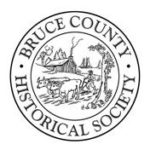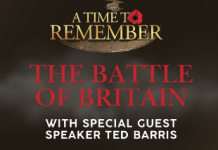
You wouldn’t usually turn to a history book for some funny one-liners. Yet here they are, in Norman Robertson’s “History of the County of Bruce”, published by the Bruce County Historical Society.
While writing the book in 1906 Robertson called on a schoolteacher friend for help with the section “Humor in the School-Room”. The teacher, with “… a deep appreciation of humor, who has taught many years in the county”, recalled many of the amusing answers given by the school boys and girls of Bruce, some of them culled from examination papers, others given orally.
Time for a glimpse at what pupils learned from their lessons in the 19th century classroom. (Idea: try some of these questions on your own kids, or grandkids.)
—————————————–
“From what animal do we get beef?” asked the teacher of a primary class. “The butcher,” was the ready answer of one of the little ones.

“Into how many parts is the day divided?” “Three: breakfast, dinner and supper.”
A teacher giving a lesson on the proper use of the words “bring” and “fetch” asked this question: “If the cows were in a field and I wanted the dog to go after them, what would I be likely to say to the dog?” “Sic ’em!” said the boy.
Here are some answers to the question: “How do you know that the earth is round?” “The earth is round, because if it wasn’t you’d fall off when you came to the end.” Another one still more original was, “The earth rolls round the sun; a square thing can’t roll, therefore the earth must be round.”
Another answer about the shape of the earth: “The earth is round like an orange, flat at both ends. When it was first made it was round like a ball, but it has been spinning so fast for such a long time that it has wore flat at the two ends.”
“What is the capital of a country?” “Where the jail is.” “What is a republic?” “A place where they all elect themselves.”
Turning to history, perhaps you didn’t know these rather astonishing facts:
“Mary Queen of Scots married the Dolphin of France before she was beheaded.”
“John did not want to sign the Charta, but the barns said he had to, all the same.”
“Charles I met his doom without a flinch.”
“Who appoints the Governor of Canada?” “The Pope,” said one. “Mr. Cargill,” said another.
“It was very difficult for William Lyon MacKenzie to escape to the United States, because 1,000 lbs. was put on his head.”
“The British searched American ships for deserters. The Americans looked so like themselves that they could not tell which to arrest.”
“The foe was sullenly firing.” “Why sullenly?” “Because they’d just been licked,” said a boy, who doubtless could easily imagine their feelings.
“What is a mummy?” asked the teacher. “A cured man,” replied a boy. “Cured of what?” queried the teacher. “Not that kind of cured, cured so he’d keep,” was the answer. Another answer: “A stuffed man.”
The request, “Give in your own words this quotation from “The Brook,” “I linger by my shingly bars,” elicited the following from one of the girls, “I stay about the old frame hotel.”
“What is the difference between “discover” and “invent?” “Discover is to find something that was there all the time. Invent is to find something that never was there before.”
“What is the masculine gender of witch?” “Bachelor.” “What is the feminine gender of bachelor?” “Widow.” “The masculine of duchess?” “Dutchman.” “The feminine of monk?” “Monkey.”
“For what do these letters stand: “B.A.”?” “Before Adam,” “Begin Again,” “Bachelor of Adversity.” “D.D.” stands for “Dry Dock.”
In a school in Kinloss was a little boy who would persist in saying “have went.” The teacher kept him in one night and said, “Now, while I am out of the room you may write “have gone” fifty times.” When the teacher came back he looked at the boy’s paper, and there was, “Have gone fifty times.” On the other side was written, “I have went home.”
—————————————-
submitted by Robin Hilborn
Bruce County Historical Society












